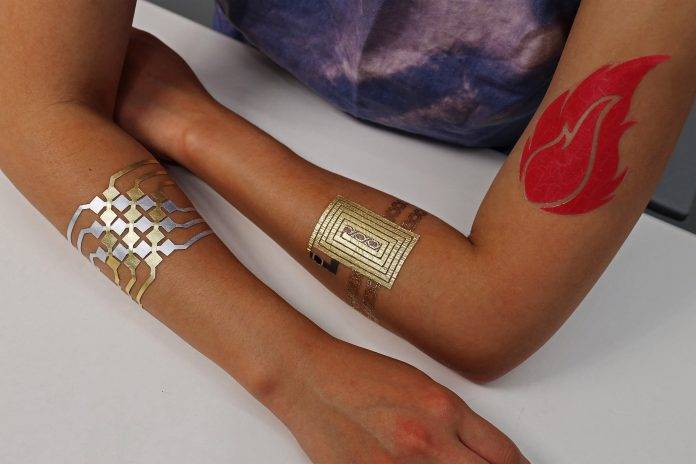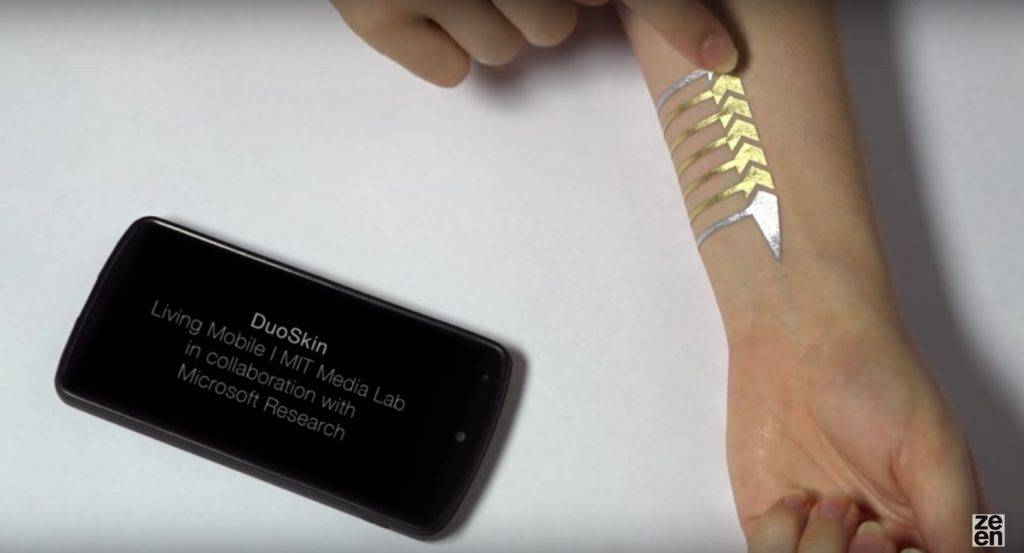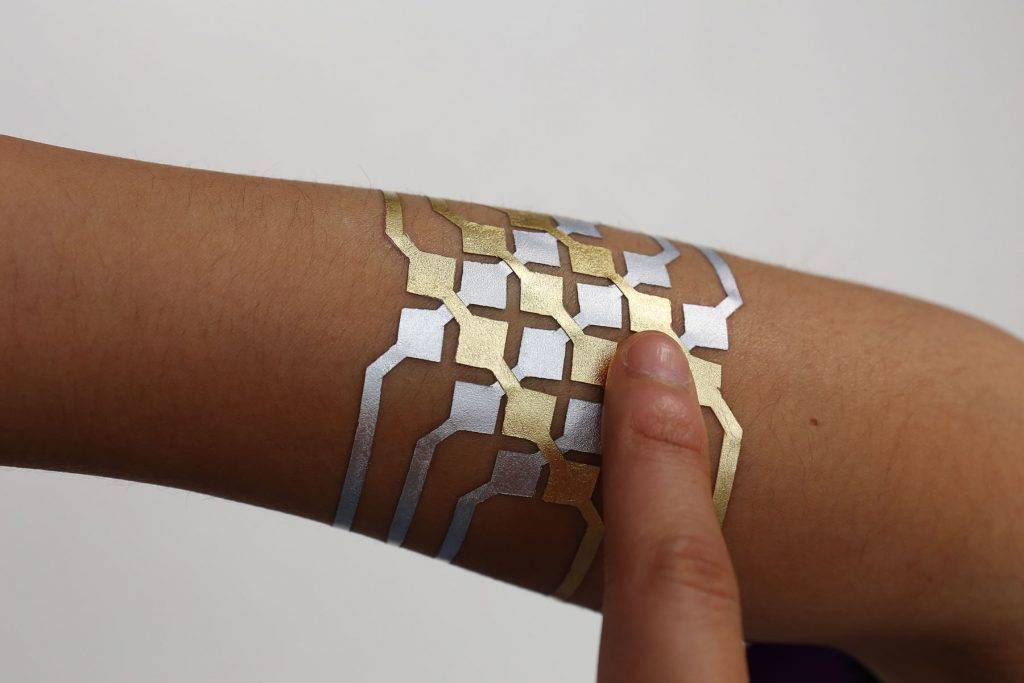
You’ve seen those gold and silver flash tattoos that have become popular for music festival attendees. They’re pretty decorative and makes your skin look like a canvas. But what if it can be functional as well? A team from MIT’s Media Lab have done just that with DuoSkin, which is a series of smart temporary tattoos that can actually interact with your smartphone or tablet. So not only can you look pretty nice, but you add even more to your cool factor when you start swiping on your skin and stuff happens on your device.
They designed the smart tattoos to look like the ones that fashion-conscious people would actually wear on their skin. But it is made from gold metal leaf, a conducive material that can actually interact with electronic circuits and can of course respond to touch. They are actually connected to a micro controller and wireless communication unit, at least in this prototype. There are four different patterns: a button for single clicks, a slider for single scrolls, another different slider for continuous scrolls, and a lattice shape to serve as a trackpad.

There are three classes of on-skin user interfaces that they were able to come up with. First is input, which is basically what the patterns we mentioned above can do, and that is to serve as a sort of interface to control your smartphone or tablet. The output will display tattoos that can change color depending on your body temperature, using thermochromic dyes. The last prototype will use NFC tags to store data onto your skin which can be read by NFC-enabled devices.



The team is led by PhD student Cindy Hsin-Liu Kao, and is made up or various students and researchers at MIT. If this does go commercial, it will be pretty interesting to see if it will click with the public and how it can change tattoo art and digital communications.
SOURCE: MIT









